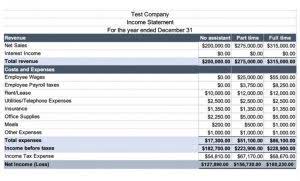Accounting Services & Cash Flow Management

Current assets include cash, accounts receivable expected within one year, and inventory. Current liabilities include accounts payable due within one year and short-term debt payments due within one year. The cash flow statement is divided into operating, investing, and financing. The operating portion of cash activities tends to vary based heavily on the net working capital reported on the cash flow statement as a company’s current assets minus current liabilities.
What is the primary purpose of cash flow analysis in business decision-making?

Figures used in this method are presented in a straightforward manner. They can be calculated using the beginning and ending balances cash flow management for small business of various asset and liability accounts and assessing their net decrease or increase. Together, these different sections can help investors and analysts determine the value of a company as a whole.

Negative Cash Flow
Cash flow analysis is the process of examining the amount of cash that flows into a company and the amount of cash that flows out to determine the net amount of cash that is held. Once it’s known whether cash flow is positive or negative, company management can look for opportunities to alter it to improve the outlook for the business. That means that Acme generates a large percentage of revenue from its operations.
My Services
One cash management technique includes using excess cash to pay down lines of credit with a credit sweep. Cash management is an active method for companies and https://www.bookstime.com/articles/part-time-accounting individuals to see their inflows and outflows frequently, and manage savings and investments. A large struggle many small business owners face is learning how to properly project expenses and calculate future debts. A company must look at both short-term and long-term needs for effective cash flow forecasting. Cash flow and sales projection reports can show whether a business has enough money to cover operating expenses based on forecasted revenue. The primary purpose of cash flow analysis is to provide insights into a company’s liquidity, profitability, and overall financial stability.
- Effective cash flow management helps businesses make informed financial decisions, prevent cash shortages, and improve their overall financial health.
- Financial institutions generally like to see this kind of planning, especially if you can clearly show when you’ll be able to repay the funds.
- It shows you when cash will be coming in and when it will be going out, and it’s a great way to visualize cash flow management and adjust your approach.
- It aims to accurately forecast your business’s cash flow needs by effectively tracking and controlling your cash inflows and outflows.
- This may involve reviewing internal procedures, implementing new technologies, or seeking external expertise to identify areas for improvement.
- When you lease, you can make small payments over time and keep cash flow for your day-to-day operations.
- This is the figure that determines whether or not a company has enough funds coming in to pay bills and operating expenses.
- Mr. Chau graduated with a BS in Accounting from Bentley University in Massachusetts.
- They may also receive income from interest, investments, royalties, and licensing agreements and sell products on credit rather than for immediate cash.
- However, some may need to plan daily, while others only need to plan monthly.
- By maintaining optimal stock levels, you can fulfill orders promptly, leading to quicker invoicing and payment.
By maintaining optimal stock levels, you can fulfill orders promptly, leading to quicker invoicing and payment. Not all revenue and expenses affect cash flow immediately due to differing payment terms and the nature of certain transactions that may delay the actual cash movement. A clear understanding can significantly influence strategic business decisions, from pricing and cost control to investment planning. The knowledge allows for more accurate budgeting and financial forecasting, ultimately contributing to a company’s success. It is crucial to clearly distinguish ledger account between cash flow, revenue, and expenses.













